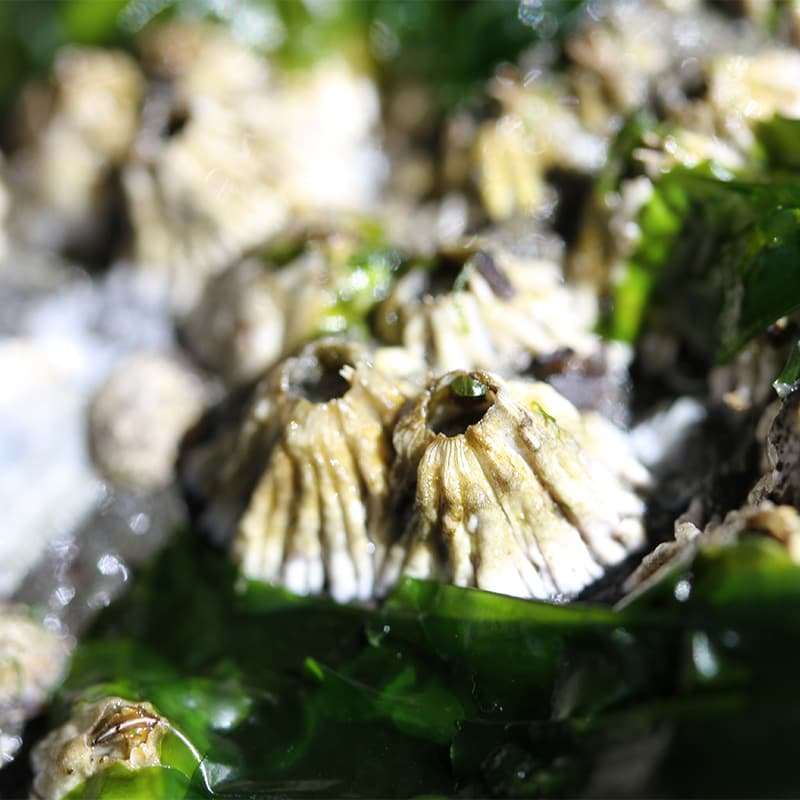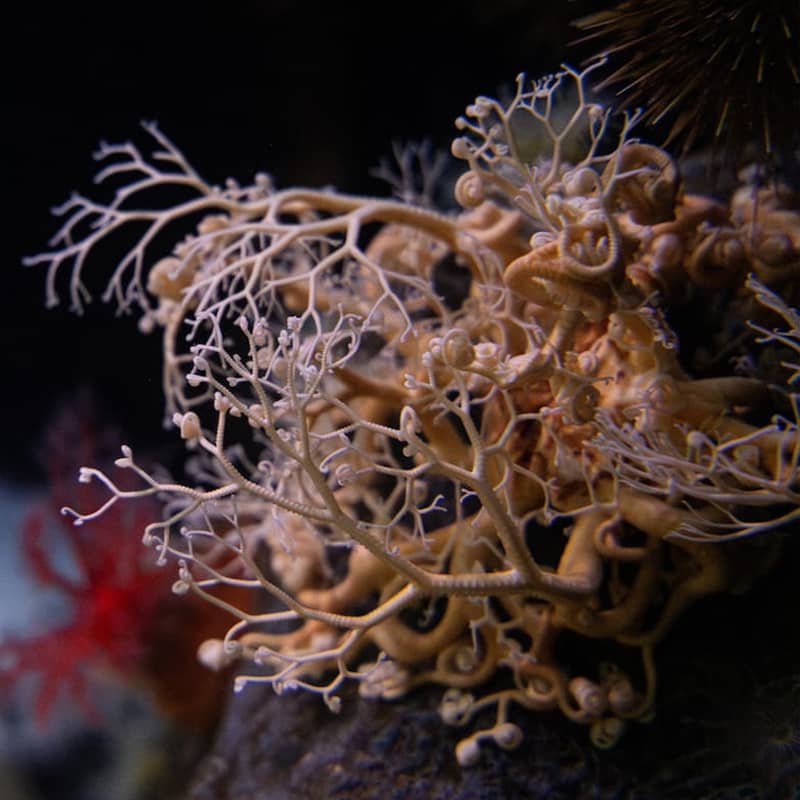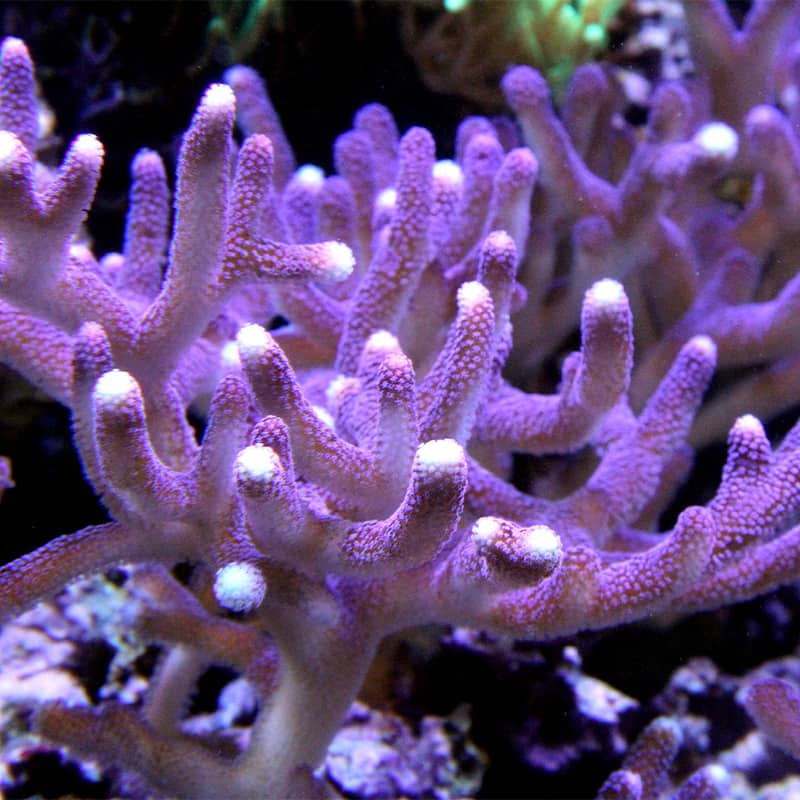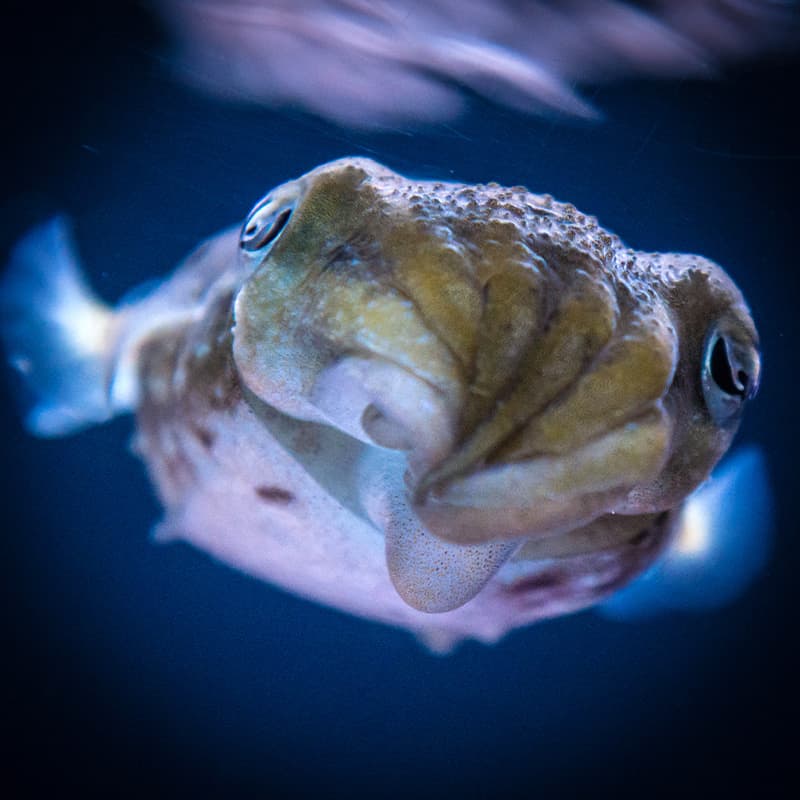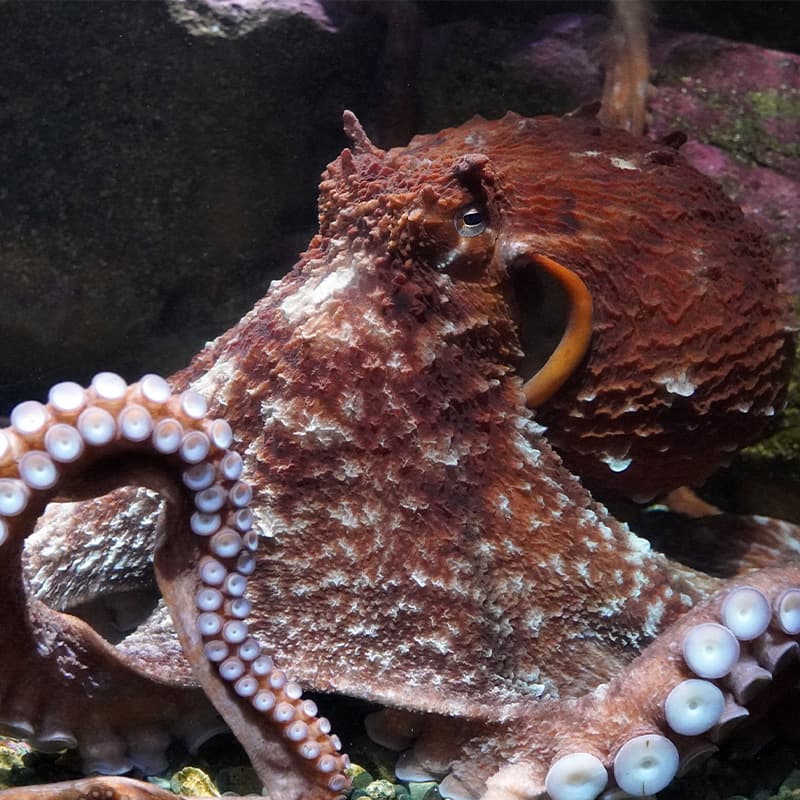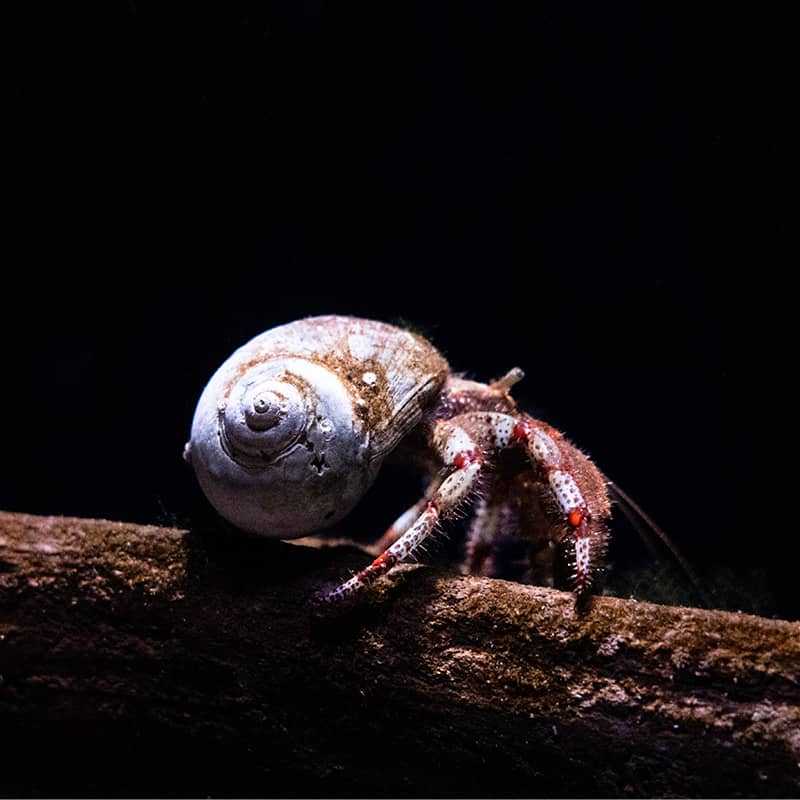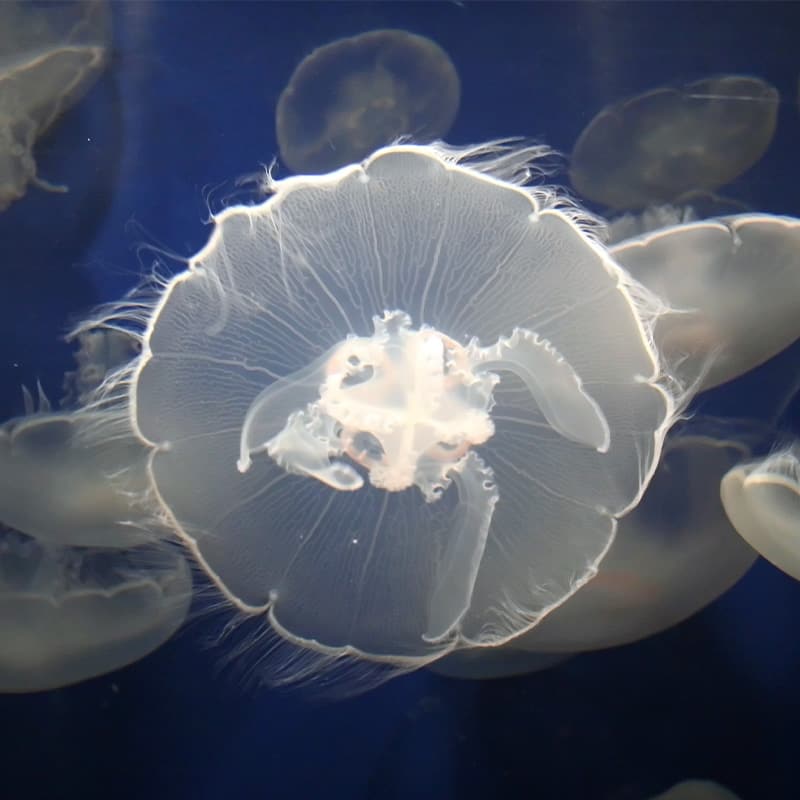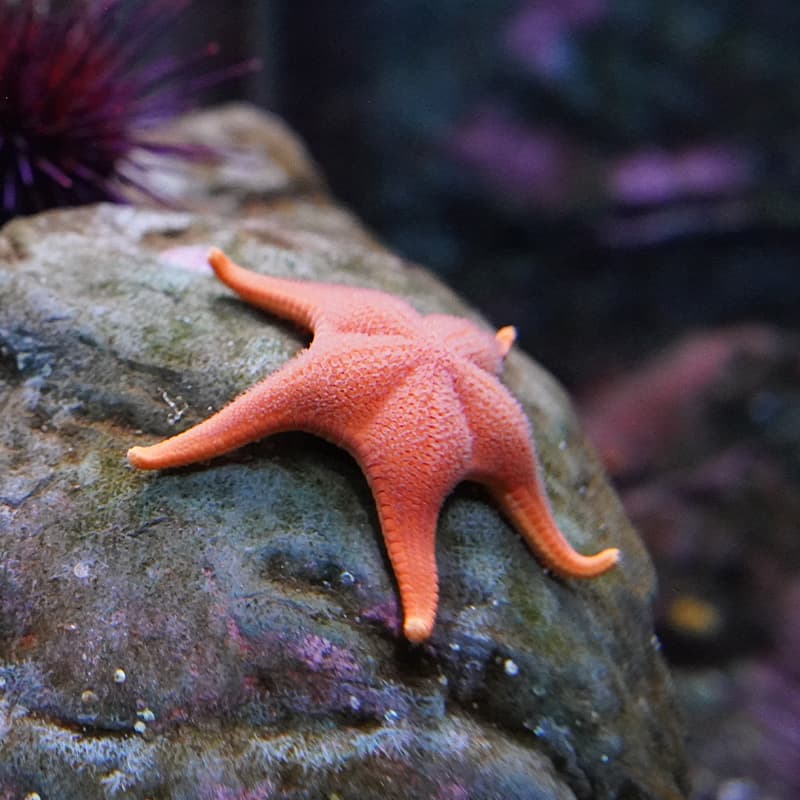- Invertebrates
Anemones
From a big family
More than 1,000 sea anemone species are found throughout the world’s oceans and survive at depths of more than 32,000 feet below sea level. The largest and most diverse varieties live in shallow tropical waters.
At the Aquarium
- Habitats throughout the Aquarium
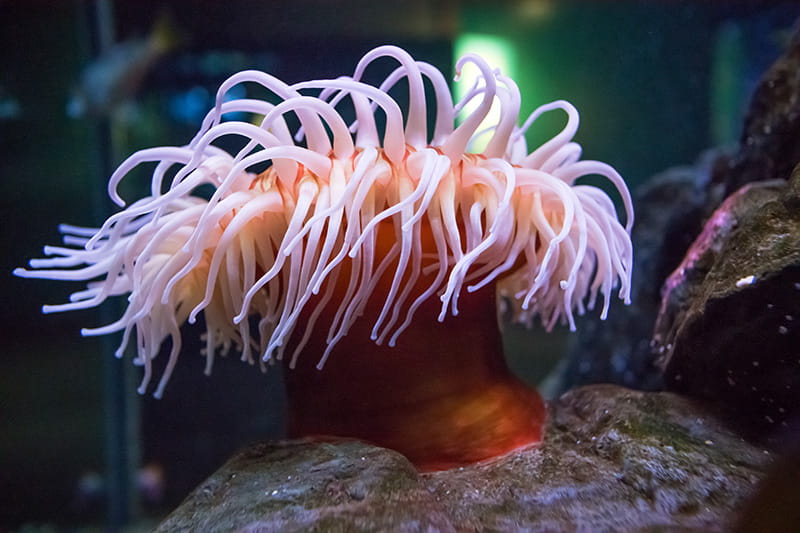
No place like home
Though some are free swimming, most adult anemones stay in one place. They anchor themselves to surfaces or sand with a sticky foot called a pedal disc. If their environment becomes unlivable, they slowly slide along the ocean floor on their foot or float away and “swim” by flexing their bodies.
Poisonous predators
When small fish or crustaceans pass by and touch the tentacles around their mouths, sea anemones shoot a harpoon-like spear or nematocyst into their prey, injecting a paralyzing neurotoxin. They then use their tentacles to guide the food into their mouths. Luckily, only a few have stinging polyps that are harmful to humans.
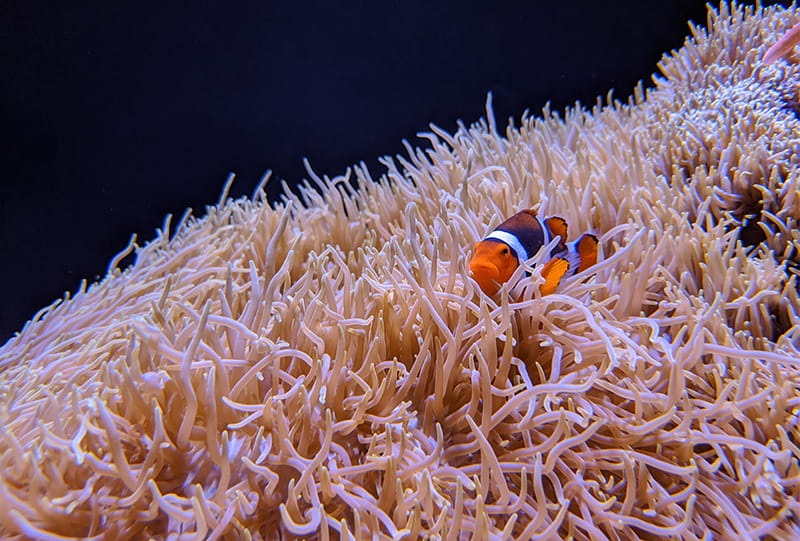
Close alliances
Some anemones have symbiotic relationships. The most well known is with the clownfish. A mucus layer protects the clownfish from the anemone’s sting so it can live safe from predators within the anemone’s tentacles. The anemone gets the scraps from the fish’s meals. Some anemones also provide safe harbor to green algae in exchange for oxygen and sugar, the by-products of the algae's photosynthesis.
Underwater warriors
Some colonies of anemones fight other groups to protect their territories. They live in large “armies” near each other. “Scouts” look for space to claim. If an anemone from another group gets too close, “warriors” slap it with special tentacles that leave patches of stinging cells stuck to the intruder.
Help protect sea anemones
Though sea anemones are not endangered, pollution, over-collection, trampling by careless visitors and other human activity can have a negative effect on them. So tread lightly when you’re in their neighborhoods. Even the Pacific Northwest’s giant green sea anemone (about as big as a dinner plate) is vulnerable!
Quick facts
These creatures can survive at depths of more than 32,000 feet.
Though most anemones stay in one place, they can “swim” by flexing their bodies!
A mucus layer protects clownfish from an anemone’s sting.
